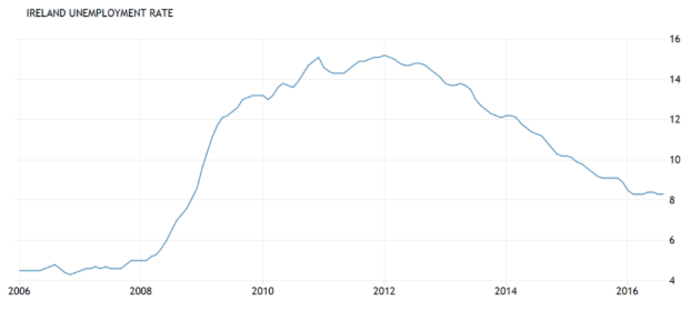Town hall meetings and explaining the big picture – here's how to keep employees engaged
The current war for talent means a business with unengaged employees is an organisation in trouble.
WHEN IRELAND WENT into a deep recession following the heady days of the Celtic Tiger, numerous employers were faced with little option but to reduce their workforce.
Ireland’s unemployment rate rose from 4.5% in January 2007 to 15.1% in October 2011 and the country lost newly qualified talent to places such as Australia and Canada.
Employees that remained were left with few alternative job options and were likely to stay with their company regardless of whether they found the work rewarding or not.
Fast forward to 2016 and the landscape is very different with competition among companies trying to attract new employees intensifying steadily.
The reduced pool of job applicants due to relocation abroad and redundancies during the recession, combined with falling unemployment and rising vacancies, has resulted in a war for talent.
Post-Brexit, some recruitment companies have taken calls from Londoners considering relocating to Dublin so this war for talent is likely to intensify even further.
As a result the emphasis on attracting and retaining the best talent in the market has become more important and companies are starting to take a closer look at their employee engagement strategy.

Get them engaged
Employee engagement is a proven predictor of the three things business leaders care most about; revenue, the quality of their products and whether their customers are having a positive experience.
Unfortunately, it’s also one of the more difficult metrics for an organisation to take action on, competing with other pressing business priorities and ultimately difficult to quantify in terms of exact positive impact.
This can result in an engagement program that focuses heavily on measuring engagement rather than actually taking action and trying to improve engagement.
Too often we see an over reliance on the annual company-wide engagement survey which becomes a box ticking exercise that serves little purpose if no action is taken on the metrics and information gleaned.
Luckily, as the engagement market has matured and more academic research into this area has been carried out, we now know that two critical drivers of engagement for employees are career opportunities and alignment to strategy.
Having opportunities to grow your career in a company is consistently shown to relate to engagement levels and specifically, how committed people feel to an organisation.
The first essential step is to make sure that you hire the right people for the right jobs – both in terms of skills and cultural fit. Then it’s up to an organisation and an individual to nurture those skills and ensure individuals have a clear career path.
An employee should set long-term career goals for themselves and discuss with their manager how they can incorporate the development and training needed to meet their goals into their role.
With 70% of learning happening on the job, the answer isn’t always just about more training, but also about what further opportunities managers can give to their teams to help them progress.
Enrichment
A business also needs to think about job enrichment, such as allowing its employees to work on innovative projects outside of their core job area, or a project beyond their current knowledge or skills level in order to stretch them developmentally.
A second key driver of employee engagement is strategic alignment – for example, knowing and understanding where a company is going and how you fit into the overall plan.
We all need to feel like we’re connected to something bigger in our day-to-day work. This starts with clear communication from executives and messages that are reinforced all the way down to team leaders.
Sending more emails or newsletter communications isn’t always necessary, employees like to feel connected to leaders via more informal communication channels.
For example, in a smaller organisation, a monthly town hall or forum with senior leaders works well, or, in a larger organisation, a webcast.

At Qualtrics, we hold a weekly web meeting with our chief executive where all 1000+ employees based around the world join in to hear about and discuss company news and business updates.
I once worked for a company where the new CEO gave a talk and Q&A session in one of the office canteens. It was recorded and distributed – every seat was taken and people were spilling out of the room in every direction to have the chance to get an update on the business from its leader.
If you give your employees something to care about, they’re more likely to care.
Bottom line
Employees are the lifeblood of an organization, how engaged your employees are and how likely they are to recommend where they work directly predicts the company’s bottom line and determines overall company performance and growth.
Measuring employee engagement is vital for a happy and productive organisation and by collecting and acting on employee feedback, employers can optimise performance, increase output and identify what they need to do to create superstar employees to help grow their business.
In the words of Jack Welch, the former chief executive of GE: “There are only three measurements that tell you nearly everything you need to know about your organisation’s overall performance: employee engagement, customer satisfaction, and cash flow.
“It goes without saying that no company, small or large, can win over the long run without energised employees who believe in the mission and understand how to achieve it.”
Sarah Marrs is an employee engagement expert with Qualtrics.
If you want to share your opinion, advice or story, contact opinion@fora.ie.






